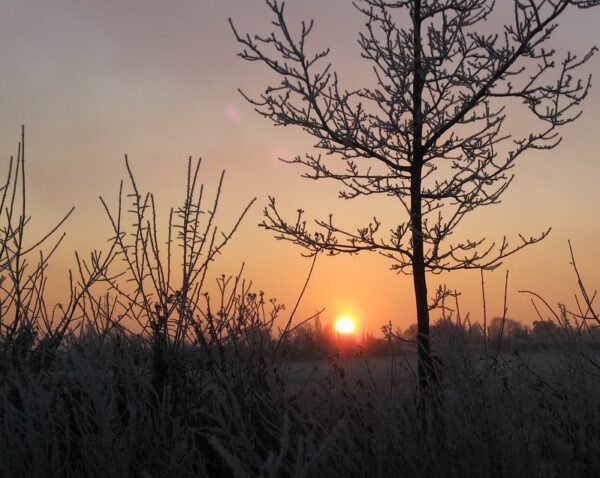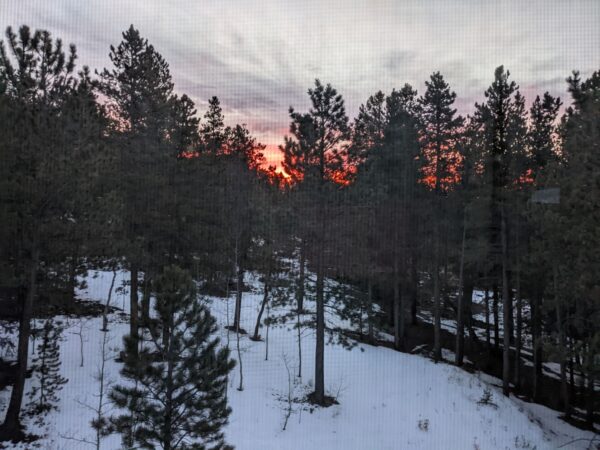 I wrote a blog post about the O Antiphons in 2019, and I loved picking out the image to illustrate each one. So I have decided to post on the O Antiphons again, in order to highlight additional images and to explore the scriptural roots of the meaningful word images. If you aren’t familiar with the O Antiphons or need a refresher, please check out my 2019 blog post here.
I wrote a blog post about the O Antiphons in 2019, and I loved picking out the image to illustrate each one. So I have decided to post on the O Antiphons again, in order to highlight additional images and to explore the scriptural roots of the meaningful word images. If you aren’t familiar with the O Antiphons or need a refresher, please check out my 2019 blog post here.
Today is the fifth O Antiphon out of the seven days before Christmas, in these late days of Advent intensification. With only three days before Christmas Eve, we continue to turn our thoughts and prayers in anticipantion – looking ahead toward the coming incarnation.
Hopefully by now, you are finding that praying the O Antiphons is helping to create some balance and peace in the great rushing around getting ready for Christmas. Remember that reciting the words of the O Antiphon for each day takes less than a minute. You can easily include them before and after grace at dinner or as part of your advent wreath tradition. And if you take just another less than a minute to light a candle or your advent wreath beforehand, I promise the O Antiphons are breathtaking by candlelight!
You can find my blog post on the O Clavis David antiphon from yesterday here and the blog post on the O Rex Gentium antiphon for tomorrow, here.
O Rising Dawn – Antiphon for December 21
O Oriens, Rising Dawn, splendor of light eternal and sun of justice: come and enlighten those who dwell in darkness and the shadow of death.
O Oriens, splendor lucis aeternae, et sol justitiae: veni, et illumine sedentes in tenebris et umbra mortis.
 O Oriens, Rising Dawn:
O Oriens, Rising Dawn:
The invocation of Jesus as Radiant Rising Dawn comes in this O Antiphon – the antiphon that is most connected to nature. I like to think of this Rising Dawn antiphon as being associated with the creation of Earth recorded in Genesis:
Then God said, “Let there be lights in the dome of the sky, to separate day from night. Let them mark the fixed times, the days and the years, and serve as luminaries in the dome of the sky, to shed light on the earth.” And so it happened. God made the two great lights, the greater one to govern the day and the lesser one to govern the night; and God made the stars. God set them in the dome of the sky to shed light upon the earth, to govern the day and the night; and to separate the light from the darkness. God saw how good it was. Evening came and morning followed – the fourth day. (Genesis 1:14-19)
On the first day of creation, God created light, and on the fourth day of creation, God/Jesus/Wisdom danced celestial bodies into being; the moon and sun and stars and planets and galaxies were formed. These words in Genesis communicate the carefully ordered universe that was created. Wisdom/God prudently set the sun, moon, and stars in the dome of the sky to separate the light from the darkness and to govern the days and nights and seasons. Also, in the process of creation, God established the forces of gravity and magnetism that govern the laws of orbital mechanics. These universal laws fit well with the O Wisdom antiphon that proclaims that Wisdom/God ordered, and continues to order, the universe mightily and sweetly.
I think that it is no coincidence that the O Antiphon with the Messianic title of Rising Dawn for Christ, sometimes translated “Dayspring” or “Radiant Dawn,” happens to fall on the winter solstice. We celebrate the solstice, because the dawn that arises from longest night begins a cycle that proceeds in the direction of increasing light and longer days. So on the longest and darkest night of the year, as we yearn for light to come back into the world, we ponder and pray this O Antiphon – O Rising Radiant Dawn.
This O Antiphon is somewhat analagous to lighting the pink candle on the advent wreath on the third week of Advent. In our expectation, we find hopeful joy. Again we see the distinct contrasts that are highlighted in the O Antiphons – strong/gentle, alpha/omega, branch/root, open/shut and now light/darkness.
The dramatic opening to the the Gospel of John connects the coming of Jesus to a light shining in the darkness:
In the beginning was the Word; the Word was in God’s presence and the Word was God. He was present to God in the beginning. Through him all things came into being and apart from him, nothing came to be. Whatever came to be in him, found life, life for the light of all. The light shines on in darkness, a darkness that did not overcome it. (John 1: 1-5)
Jesus himself recognized this Messiaic title, when he told his disciples that he is the light of the world and the promise of a new day:
Jesus spoke to them once again, “I AM the light of the world. No followers of mine shall ever walk in darkness; No, they shall possess the light of life.” (John 8:12)
This image of dawn is not the harsh light at noon that blinds us, but the more gentle, soft dawn light that illuminates the sky with the majesty of its lovely colors. The light of Christ comes to us like the soft, rosy light at sunrise and shines in the dark and dreary corners of our souls.
Splendor of light eternal and sun of justice:
The sun, the source of light, heat, and energy, is critical to our existence. Without the sun, Earth would be a barren and frozen wasteland. I invite you to read aloud this stunning, poetic antiphon phrase – “splendor of light eternal and sun of justice.” These gorgeous words communicate that out of the darkness, the sun of enlightenment and healing must necessarily move us into the sun of justice, as written in this verse of Malachi:
For you who fear my name, there will arise the sun of justice with its healing rays. (Malachi 3:20)
Symbolically, the Sun of Righteouness is to rise with healing, brightness, and warmth. When we are aware of this healing within our cold hearts that reside in the dark and dismal shadows of death, we must respond by being a light unto the nations:
It is too little, God says, for you to be my servant, to raise up the tribes of Jacob, and restore the survivors of Israel; I will make you a light to the nations, that my salvation may reach to the ends of the earth. (Isaiah 49:6)
 Come and enlighten those who dwell in darkness and the shadow of death.
Come and enlighten those who dwell in darkness and the shadow of death.
The people who walked in darkness have seen a great light. Upon those who dwelt in the land of gloom, a light has shone. You have brought them abundant joy and great rejoicing, as they rejoice before you as at the harvest. (Isaiah 9:1-2)
The reading above from Isaiah calls on us to be patient and hopeful during this time of preparation for the Enlightened Incarnation of Jesus. It reminds us that, even though we may currently be walking through difficult times in utter darkness, that we will surely find that, in Christ “a light has shone.”
The phrase “people who dwell in darkness” does not just refer to people of the Old and New Testaments. It also refers to us and the gloomy corners of our souls. On this Winter Solstice, we ask for Radiant Dawn to illuminate even those dark recesses within ourselves. Focusing on God’s light can help bring us out of any emptiness of depression or anxiety or despairing into proximity to a space of light and rejoicing. I also recall the verses in Psalm 23 that reassure us that, even though we walk in “darkness and the shadow of death,” God promises to be with us throughout.
Here are two more New Testament verses that are pertinent to this Rising Sun O Antiphon:
Besides, we posess the prophetic message as something altogether reliable. Keep your attention closely fixed on it, as you would on a lamp shining in a dark place, until the first streaks of dawn appear and the morning star rises in your hearts. (2 Peter 1:19)
All this is the work of the kindness of our God. [God], the Dayspring, shall visit us in mercy to shine on those who sit in darkness and in the shadow of death, to guide our feet into the way of peace. (Luke 1:78)
 We ask expectantly – come quickly and enlighten us. Light is coming into the world!
We ask expectantly – come quickly and enlighten us. Light is coming into the world!
As a reminder, there are a couple of options if you are interested in hearing the O Antiphons chanted in Latin. First, if you click here you will go to the Traditional Catholic Living website (Reference 7) that has a link to each O Antiphon, with the words and music so that you can follow and chant along. You can also find the chants here at an LDS blogpost (Reference 8.) I like this link, because it includes the entire vespers sequence. Each O Antiphon is chanted, followed by the Magnificat, finishing with the O Antiphon chanted again.
In my opinion, listening to the Gregorian chanting by candlelight is the best way to experience the O Antiphons!
Readings: The New American Bible, Confraternity of Christian Doctrine, Washington DC, 1970.
Reference 1: Malcolm Guite, “O Oriens A Fifth Advent Reflection,” blog post, December 21, 2021.
Reference 2: Ives Digory, O Oriens: Meditations on the O Antiphons, blog post at Sanctum in Heremis website, January 8, 2015.
Reference 3: Fr. Roger Landry, Meditation Notes on the O Antiphons, Catholic Education Resource Center, 2004.
Reference 4: O Dawn, Mount Saint Mary’s Cistercian Abbey, Wrentham, MA, December 21, 2018.
Reference 5: Arte Sacra, Via Pulchritudinis, Antifonas do O, http://tulacampos.blogspot.com/2012/12/antifonas-do-o.html?m=1, December 13, 2012.
Reference 6: Br. Jerome OSB, “Reflections on the O Antiphons,” blog post at https://liturgy.co.nz/reflection/oantr2.html, 2011.
Reference 7: Sing the O Antiphons Gregorian Chant, Traditional Catholic Living website, http://www.traditionalcatholicliving.com/o-antiphons-advent/.
Reference 8: Awaiting the Coming Messiah: The “O Antiphons,” LDS Seasonal Materials, http://huntsmanseasonal.blogspot.com/2013/12/awaiting-coming-messiah-o-anitiphons.html.
Image 1: Heading into (Orbital) Sunrise, photo by Bob Himes from International Space Station, NASA, nasa.gov, July 26, 2022.
Image 2: Sunrise, Rose Davies, flickr.com, CC BY-NC-ND 2.0, Creative Commons, January 10, 2010.
Image 3: Sunrise in Rollinsville, photo by Julie Henkener, December 12, 2022.
Image 4: Sunrise from Orbit, International Space Station, ISS-43, NASA, Wikimedia Commons.
Image 5: Sunrise Reflecting on the Mountains, photo by Julie Henkener, November 7, 2022.
















Leave a Reply
Join the conversation by submitting a comment to this blog post below.